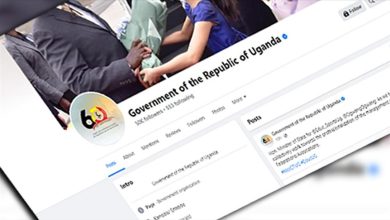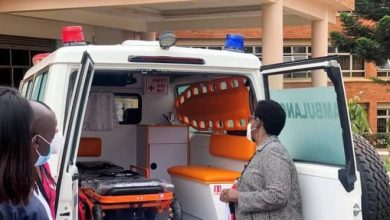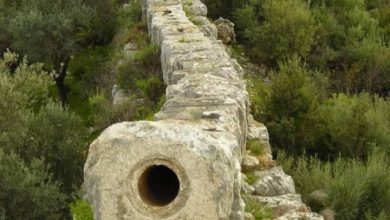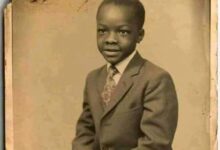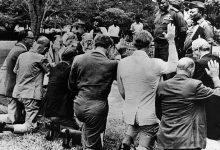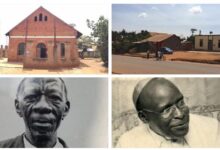The Political Governance Of Busoga, Uganda: Past, Present, Future
It is unlikely that the Government of Tibuhaburwa Museveni will recreate Kingdoms and raise Busoga to Kingdom status again. For the time being Kingdom will continue to be in the brains of men and women and their children; not in reality.
Uganda Today: The Political Governance Of Busoga, Uganda: Past, Present, Future
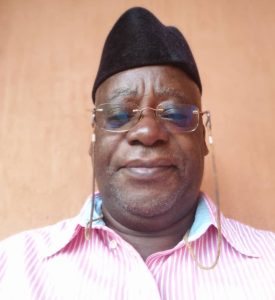
BY Oweyegha-Afunaduula
19th November 2023
There are many types of governance. There is spiritual governance, social governance, cultural governance, immoral governance, ethical governance, academic governance, intellectual governance, military governance, ecological governance, environmental governance and political governance, to name but a few. In this article, I am interested in the political governance of Busoga in the past, present and future. Therefore, I will not bother about the other types of governance as they relate to Busoga.
The political governance of Busoga has transited from the lassez faire type when the inhabitants of the area were not properly politically organized and governed; to the time when they were governed by a feudal dynasty of the Igaga Clan; to the time when they were governed by the British colonialists as a colonially conquered and occupied people; to the post-colonial period when they were governed under a mixture of direct rule from the centre and a semi-feudal political arrangement when the area they occupy was constitutionally characterized as The Territory of Busoga with a Kyabazinga that manifested more or less like a King; to the time when Apollo Milton Obote abolished the Kingdoms of Ankole, Buganda, Bunyoro and Toro and the semi-feudal state of Busoga to create the supremacy of Central Government over all peoples of the young State of Uganda; to full blown military rule of Idi Amin when his government used military governors and military chiefs to govern Busoga; to the brief era of the Uganda National Liberation Front (UNLF) when Busoga and all other parts of Uganda were politically governed similarly but with Uganda National Liberation Army’s Military Commission hovering over the political processes in the country: to the second reign of Apolo Milton Obote when the process of breaking Busoga into smaller units called Districts started, with Jinja District, Kamuli District and Iganga Districts being created; to the time when Tito Okello ruled the whole of Uganda as a military ruler, but without having much influence on Busoga other than a spate of destruction of life and properties of those heavyweights who had been associated with the Obote II regime; to the current Movement reign that started in 1986, and has seen Busoga bantustanized into numerous districts (Namutumba, Bugweri, Luuka, Kamuli, Buyende, Iganga, Jinja, Mayuge) all broken into political constituencies, each represented in The Parliament of Uganda by at least 2 MPs and governed directly by the Office of the President through officers called Resident District Commissioners (RDCs) who are supposed to be civil servants but manifest more as political representatives of the political party in power – NRMO – and the President and militarily through soldiers characterised as District Security Officers (DISOs) under whom are other security officers, underscoring the truism that Busoga is thoroughly occupied politico-militarily by the powers that be.
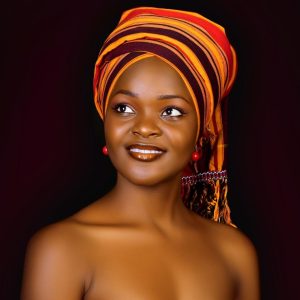
Nevertheless, Busoga has a Kyabazinga that is no longer politically empowered to make decisions that benefit Busoga and Basoga, but by constitutional design, acts as the topmost cultural leader in the region. In a way the Kyabazinga cannot manipulate himself away from being directly controlled and managed by the centre.
This was clearly demonstrated when his wedding was more or less in the hands of government. The President himself was reported to have contributed billions of shillings to make it a memorable event for Busoga and Basoga and for Uganda and Ugandans. On top of that, the President donated 20 heads of cattle to the bridegroom and bride, in addition to the 2 heads of cattle donated by the Vice President. Top Ministers in President Museveni’s government managed the whole wedding process and ensured thousands of soldiers, police officers and other officers from other security organs were on site to ensure the Kyabazinga, his bride, his invited guests and all people that graced the wedding enjoyed maximum security. It was more or less a state function.
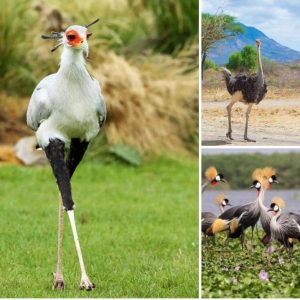
The beautiful Secretary Bird found in Murchison National Park
The fast Ostrich found in Kidepo Valley National Park
The Crane also known as the Crested Crane, a National Bird in Uganda mainly found in swampy areas
Uganda is famous for bird watching and a habitat of 1090 bird species
+256 702 239 337 WhatsApp
Tel +256 772 500 640
Email: cmkmediasolutions@gmail.com
*#VisitUganda*
*#Tulambule*
I have decided to begin the article with present-day political governance of Busoga because this is more or less where Busoga and Basoga can agree about the status quo. We have differed greatly on the past political governance of Busoga. Most of us are unlikely to imagine the political governance of Busoga, and even Uganda, because we are more comfortable where we are than where others want us to go and should be. There aren’t many Basoga and Ugandans that can overstretch their imagination 100 years ahead to imagine what kind of World, Busoga or Uganda will be in the next Century.
So few are even aware to what extent the World Wide Web has changed knowledge and the way we generate and treat knowledge to make people have higher cognitive powers, engage in critical thinking, engage in critical analysis, become professionals of the future and engage in genuine teamwork for change. Therefore, for most of us we care more for the present: how to get food to the table, bring up and educate our children and witness them gaining employment marry and produce grandchildren for us, secure our health and our human rights and enjoy good governance.
So let me go to the political governance of Busoga in the past where there has been a lot of disagreement among the writers of the area’s political history. Not much is known about the indigenous people who occupied the area that came to be known as Busoga during the overflowing power of Bunyoro-Kitara Kingdom, under whose sphere of influence it was.
We do not know how the inhabitants of the area governed themselves politically before Bunyoro-Kitara brought it under its sphere of political, military and economic sphere of influence. It is said that the inhabitants of the area were small-scale hunters and shifting cultivators who sowed the seeds of their crops among other vegetation as an ecological strategy to combat pests.
Troublesome pests would not easily locate their preferred crops to subsist on from amongst the numerous species of grass, herbs, shrubs and trees. So, while their crops were being protected, they could spend time hunting animals, such as the biggest rat on earth we call Omusu in Lusoga and other small animals such as antelopes to obtain protein.
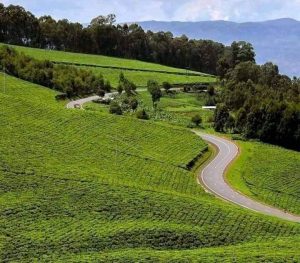
The evergreen Fortportal Tea Estate
Fortportal is famous for having the highest number of crater lakes in Uganda(52)
*#VisitUganda*
*#ExploreUganda*
*#Tulambule* +256 702239 337 Tel / WhatsApp Email: cmkmediasolutions@gmail.com
They would spend time making crafts. Their counterparts who lived on ecological islands in Lake Victoria subsisted on fish. For example, the Balawa (of Mulawa Clan) who inhabited the Busoga part of Buvuma Island were expert fisher-folk that could catch fish by diving into the water like a bad called kingfisher. They were also expert builders of boats, which some of their relatives used to migrate to Mainland Busoga almost 800 years ago.
Many writers of Busoga History thought that who ever lived on Buvuma Island was a Muganda. They were ignorant of the fact that Buvuma had a Busoga part and a Buganda part. The Busoga part was for Mulawa Clan and some other Clans. The Mulawa Clan had names and culture uniquely theirs before and after migrating to Mainland Busoga.
The members were also good makers of crafts and fighters, who were used by the early political rulers of Busoga to fight wars using bow and arrows as well as shields. It is proper to imagine that such clans had political leadership, cultural leadership and spiritual leadership, the three arms of leadership of today’s clans of Busoga.
Apparently Busoga is known worldwide as the most clanned entity, with some 300 Clans of the 6000 Clans in which humanity is organized. Although there are claims that Busoga is the home of the most ancient civilization of man, more ancient than the Egyptian civilization, Mesopotamia civilization, Chinese civilization and Indian civilization, without plausible written record it is not easy to convince the doubting Thomases.
Such civilizations had well developed political organizations. The first time we learn of political organization of the area we now fondly call Busoga with a people called Basoga is around 1230. That was the time when a Prince of Bunyoro-Kitara, Prince Ndahura Byaruhanga, of the Igaga Clan, decided to trek from Hoima, the Nyoro seat of power, through the vast area he later named Busoga, to Mountain Elgon (or Masaba), which was within the sphere of influence of the great kingdom then.
The Bunyoro-Kitara Kingdom had itself been polluted culturally by refugee nomadic pastoralists from Ethiopia whom the local people of Bunyoro called Bahuma, because when they sang, they hummed like a bee. The Bahuma infiltrated the ruling class and it is not far-fetched to assume that they even raised Kings, the same way the Tutsi infiltrated Uganda’s ruling class and ultimately captured the instruments of power and the State in 1986.
The Bahuma were actually a people who became Bahima (Hima) when they entered Ankole and Tutsi when they entered Rwanda and Burundi, and started monarchical political governance in those areas. They were all associated with a mysterious Chwezi spiritualism. Actually, the Chwezi of Uganda were associated with the Igaga Clan, which established a dynasty and dynastic political governance at Nnenda Hill in Busambira, Kigulu.
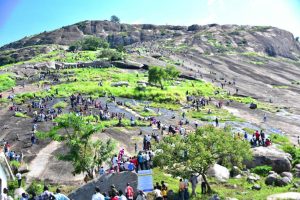
Of great impact on the political governance of Busoga is that Prince Ndahura Byaruhanga was escorted on his sojourn by his soldiers whom he resourced from the Ngobi Clan of Bunyoro to provide security to him. He found the area he later called Busoga without clear governance structures. He set out to establish governance structures in form of counties. The first county he established he called Bugabula because he gave it to one of his soldiers, Gabula, to rule. Gabula, therefore, did not continue with the trek to Mount Elgon. He started ruling Bugabula as County Chief.
The next county that Ndahura Byaruhanga established was Luuka. He gave it to his soldier called Tabingwa. After Luuka he established Busiki and gave it to his brother-in-law Kisiki, whose Clan we shall never know. Then he went on to establish Kigulu, but declined to install a county chief because he had plans to establish a Kingdom in the area where he was establishing counties in the same fashion Bunyoro-Kitara was governed politically.
He wanted Kigulu to be the seat of power for the new Kingdom he later called Busoga Kingdom. I will shortly tell you why he chose that name. Beyond Kigulu, he established Bugweri and gave it to his soldier called Menyha, and Bukooli, which he gave to his soldier called Wakooli. He passed over a small hill called Nnenda Hill, which he loved very much, and even before he came back from Mount Elgon, he decided the place of the King would be on that hill located in Busambira, very much the same way power in Busoga later decided the palace of the Kyabazinga would be at Ngenge Hill.
As Prince Ndahura Byaruhanga was descending Nnenda Hill on his way back from Mount Elgon, The inhabitants of the area whose Clan I have never been able to establish, gave the Prince a beautiful girl to be his wife in appreciation of his having visited their area. He accepted the gift. When he reached the base of the hill he decided to briefly settle together with his remaining soldiers, including Muzaya, whom he would later give a new county called Buzaya on his way back to Hoima.
His gift conceived. He waited for 9 months for her to give birth. He hoped the baby would be a baby boy because he had made up his mind that if it was a boy, he would be the first King of Busoga ruling from Nnenda Hill. And yes it was a boy. He named him Ndahura Byaruhanga I of Busoga. He chose the name Busoga because a small tree called Kisogasoga in Bunyoro and Mukakale by the people he found, was very abundant in the area. He waited until 1233 to pronounce his unilateral decision to his chiefs. Meanwhile he had started constructing a Palace for the King of Busoga to be.
By that year it was complete. Until recently, when a big politician in the NRM regime claimed it as hers and began disfiguring it, it was discernible as a palace. When Prince Ndahura Byaruhanga I of Bunyoro was about to depart, he summoned his 5 county-chiefs of Bugabula, Luuka, Busiki, Bugweri and Bukooli to Nnenda Hill to make important pronouncements to them. He first revealed to them that he was departing for Hoima and that henceforth they would be hereditary chiefs of hereditary counties in a new hereditary Kingdom he was establishing -the Kingdom of Busoga. He told them thus:
“The first King of the Kingdom will be my son who will be called Ndahura Byaruhanga I of Busoga Kingdom. I have called it the Kingdom of Busoga because of a very abundant tree in the area called Kisogasoga in Bunyoro but locally Mukakale. Since the King is sill an infant, you the hereditary chiefs of the counties which now form the pillars of the Kingdom will be regents to the King and also take care of the Queen mother. The King will rule in the palace I have constructed on Nnenda Hill, and like yours, his powers will be hereditary He will have a Rukurato or Lukiiko, which will be presided over by a Kyabazinga on his behalf.
The Lukiiko will make laws for the king to govern his kingdom, and you will be the original members of the Lukiiko. The King may appoint others to Lukiiko. Because the seat of power is in Kigulu county I will not appoint a chief for it. There cannot be two bulls in the same Kraal”.
Thus, the political governance structure and functions were well laid by the Bunyoro Prince. After addressing his Chiefs, he bid farewell to the infant king, the queen mother and the five hereditary chiefs, and started his trek back to Hoima.
On his way he established Buzaya hereditary Chiefdom and gave it to his soldier called Muzaya. So, before he left the Kingdom of Busoga in 1233, there were 6 hereditary counties (Bugabula, Luuka, Busiki, Bugweri, Bukooli and Buzaya) and one non-hereditary county -Kigulu – for reasons explained by the departing Prince. He tasked the Buzaya chief to join his counterparts as a regent and member of the Lukiiko.
That was the political governance structure of the Busoga Kingdom ruled from Nnenda Hill by the time the British colonialists arrived in Busoga from the East. The Kingdom was the first to interact with a white man in the area later named the British Protectorate of Uganda. It was the only Kingdom in the East. The Colonialist reached the first agreement with the ruler at Nnenda Hill who welcomed him with open hands. However, internally the colonialists did not want the only Kingdom in the area. They plotted to destroy it by the time they plotted to destroy it and the political governance of the Kingdom, 39 Kings had ruled from the Nnenda Hill All the names of the Kings were safely kept until two political heavyweights of the NRM plotted to shut out any new claims to rulership of Busoga.
The British colonialists strategized to weaken the Kingdom before they ultimately destroyed it. They moved the Lukiiko to Butaleja in Bunyhole, which was not Part of the Busoga Kingdom established by Ndahura Byaruhanga. They then replaced Kyabazinga with President, a title they gave to their mercenary militarist from Koki, Semei Kakungulu. He was not only presiding over Lukiiko, but he was the effective ruler of Busoga. Under his rule, the last ruler at Nnenda was poisoned to death around 1935. The one who replaced him was exiled to Bugambo in Luuka, where he died and was buries. His grave is still there.
Soon, however, Semei Kakungulu told his colonial masters that he could no longer continue as President because of advanced age. He wanted to be relieved. He had done a good job to destroy the Iganga Dynasty at Nnenda Hill. He had also helped introduce coffee and cotton growing as well as sugarcane. He had also firmly brought the hereditary chiefdoms established by Byaruhanga under British colonial rule. The colonialists were satisfied and resolved to allow him to retire.
However, when the colonialists floated the idea of one of the hereditary rulers who were the members of the Lukiiko to suggest one of themselves to replace Semei Kakungulu, they all declined, arguing that the title of President was below their destiny. Instead, they suggested Wako Zibondo of one of the newest Kingdoms, along with Bukono, to be come the new President. When the proposal was sounded to him Wako Zibondo was soundly happy to assume the role. He thanked the hereditary chiefs for the confidence and trust they placed in Him. Accordingly, he became the first person from Busoga to become the President of Busoga Lukiiko.
It should, however, be mentioned that Bulamogi, together with Bukono were not established by Ndahura Byaruhanga. They were excised from Busiki by Kisiki Nantamu, who positively responded to the request by the two brothers from Gogonya, Bugwere to give them their separate areas to govern their expanding houses. Their brother, Nagwere, decided to go Back to Gogonya. May be if he hadn’t, Kisiki Nantamu would also have given him his territory to govern.
Wako Zibondo did not act as President for long before the title President was changed to Kyabazinga as it was during the reign of the Igaga Dynasty at Nnenda Hill. So then, Wako Zibondo became the first Kyabazinga . If I remember well, he became Kyabazinga around 1939. However, William Kadhumbula Gabula Nadiope of Bugabula County began to be interested in Kyabazingaship. He replaced Wako Zibondo as Kyabazinga., but then he did not occupy the seat for long as he had to proceed to Burma to fight in the Second World War on the side of the colonialists.
When he left. Wako Zibondo reoccupied the seat but soon he developed interest in having his son, Henry Wako Muloki, occupy the set. When William Kadhumbula Gabula Nadiope returned from the war, he wanted his chair back. He got it and then plotted to make Kyabazinga hereditary. He created the Office of Katikkiro (Prime Minister) of Busoga. Katikkiro has stuck till today, but by the time the colonialists left in 1962, Busoga had not become a Kingdom again let alone have Kyabazinga ship hereditary despite great efforts by Kadhumbula Gabula Nadiope II. The scheme was greatly opposed by Bulamogi. The Uganda Constitution,1962 simply mentioned Busoga as The Territory of Busoga, short of characterizing it as a feudal entity with Kingdom status, which Ankole, Buganda, Bunyoro and Toro were assured of constitutionally.
As I write this article the Basoga are determined to continue referring to their nation as a Kingdom although the NRM/A made Constitution 1995 only refers to Busoga’s Kyabazinga as a Cultural institution, just like the other former Kingdoms except Ankole Kingdom, which was completely abolished. One time the President of Uganda, Tibuhaburwa Museveni referred to himself as “The Ssabagabe”, indicating there could be no other bull in the Kraal. It is unlikely that the Government of Tibuhaburwa Museveni will recreate Kingdoms and raise Busoga to Kingdom status again. For the time being the Kingdom will continue to be in the brains of men and women and their children; not in reality.
For God and My Country



